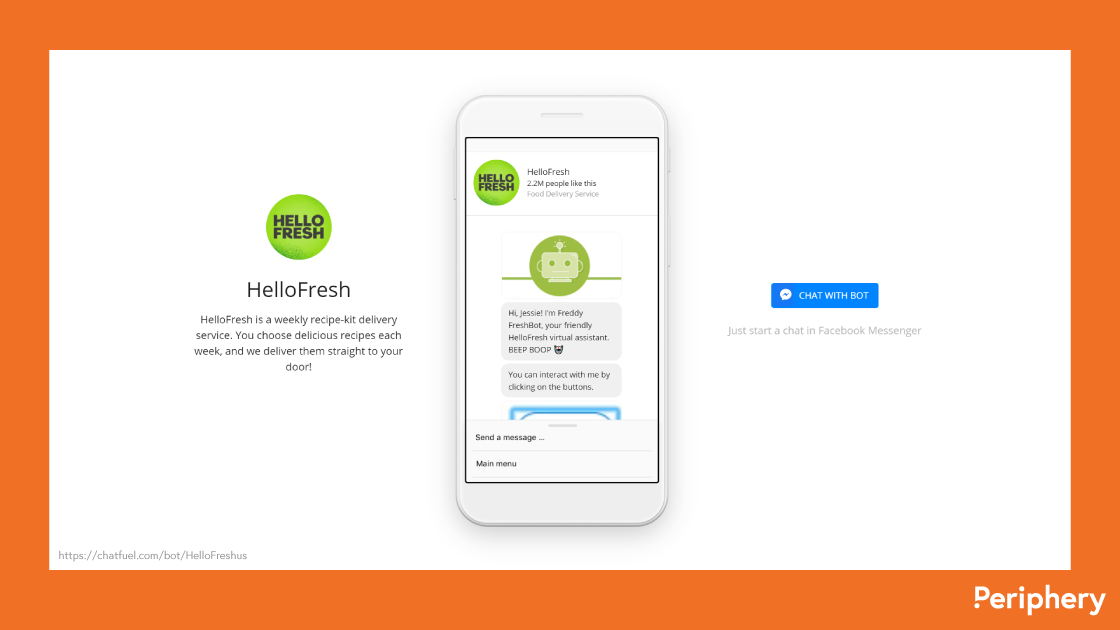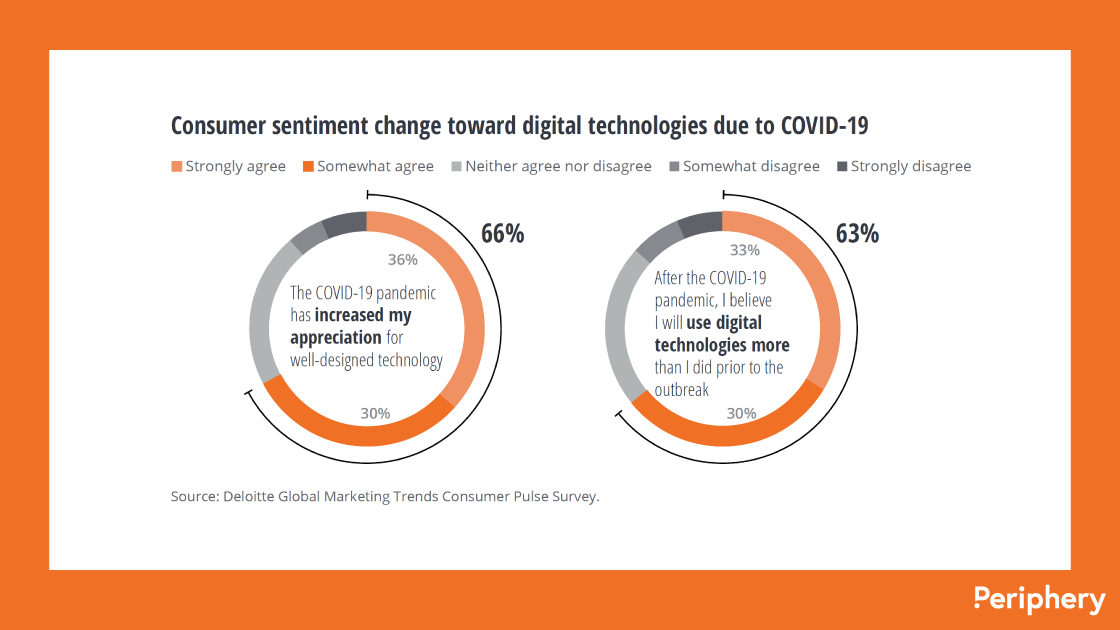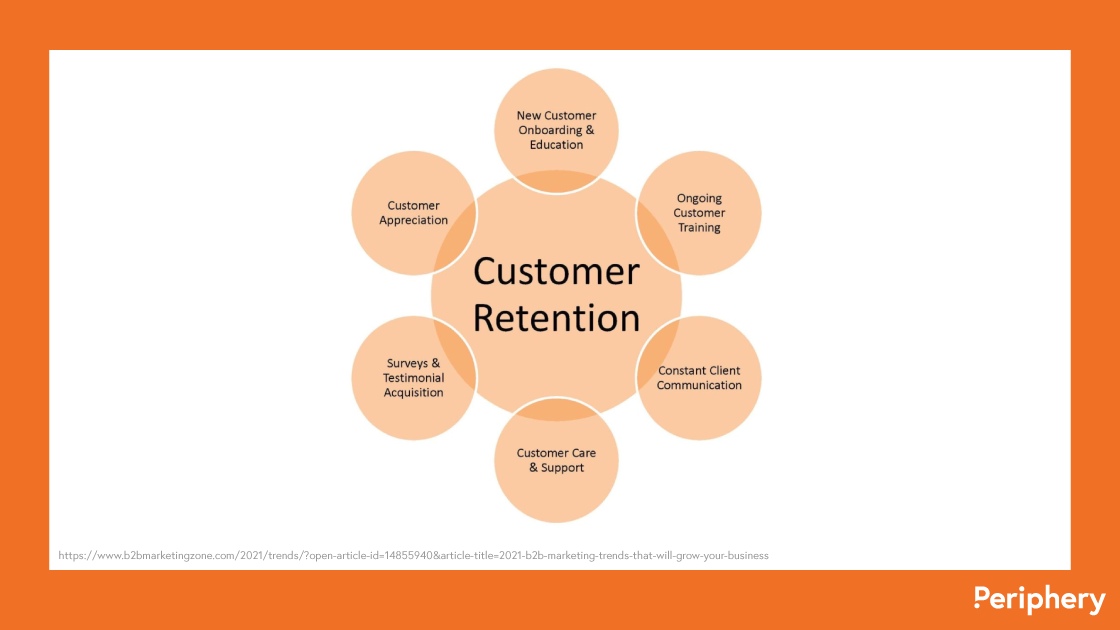In the 21st century, marketing trends evolve at such a rapid rate that if you blink, you might miss one. With so many channels to choose from, metrics to measure, and tactics to tinker with, it can sometimes feel like you’re chasing after a mythical creature in the forest.
In 2021, marketing revolves around the customer. Their desires, needs, and preferences should be at the forefront of your marketing initiatives.
Discover this list of trends to explore in the coming year to see campaign success and come out ahead of your competitors.
1. Conversational Marketing & Personalization
In 2019, the single biggest frustration customers faced when visiting a company website was being unable to find answers to simple questions (34%). This was closely followed by difficult navigation (30%), and finding basic details about a business (25%).
These days, customers expect exactly what they want delivered to them on a silver platter when it’s most convenient for them. It’s no longer sufficient to send out a generic email blast to your subscribers and expect them to engage. Nor should they when they are faced with hundreds of brands competing for their attention daily.
With the rise of instant message technology, it’s more important than ever to ensure your customers’ queries are answered in a timely manner — or face losing your customer to a business that will.
There are many ways businesses can take advantage of the conversational marketing trend. Chatbots are one example. They can help your website visitors navigate through existing information to find answers quickly. Live chat is another option, resource permitting. Facebook pages even have an option to start a conversation with a page visitor through messenger.

Consumers don’t necessarily travel along the buyer’s journey in a linear fashion. Customers want to feel like they are special, and that their favourite brands are speaking directly to them wherever they are in their unique journey. Use analytics to establish connections between points in order to create that seamless end-to-end experience.
Suppose the customer clicks on a Facebook ad, which takes them to the shop on your website. They browse around and read a post on your blog which features a newsletter sign up. Should they receive the same content in their inbox as someone who has attended all of your webinars and downloaded 4 of your last 5 e-books?
2. Social Consciousness & Empathy
Information accessibility at our fingertips has made people more aware than ever of the goings-on in the world. From sweat shops, to animal testing, to law fraud — deceit is everywhere, and some C-suite executives will stop at nothing to save a buck.
But is it worth it? When your customers smell dishonesty, the scandal can spread like wildfire and have devastating effects on a company’s reputation.
With an abundance of fake news and clickbait headlines clogging any given feed, we’re seeing a trend with companies taking a more transparent approach to business. This involves walking the concerned customer through their supply sources, mission statement, and values with the goal of reassuring their money will be spent wisely.
Beyond a simple marketing trend, people want to be understood. Every human is just that, a human with hopes, dreams, flaws, and vices. They view the brands they buy from as a representation of themselves, a way to feel a sense of real connection in a disconnected world. Brands are the guides that society looks to for the next step forward.
Individuals seldom have the resources to make a lasting difference in their communities. Therefore, they look to their favourite brands to redirect a portion of their resources in support of a cause greater than their bottom line.
Counterintuitive to the survival of our lineage, human beings have innate altruistic tendencies. A sense of empathy in your brand messaging and a desire for greater good beyond profits won’t go unnoticed. A Forbes poll resulted in some interesting data: 88% of consumers want to support brands that have social causes aligned with their product or service.
Studies show that consumers are increasingly willing to pay higher than average prices for products that are organic, sustainable, and deliver on social responsible claims, and would even be willing to forgo a name brand in place of a more environmentally-friendly product.
3. Agility & Adaptability
You might have noticed that most companies are pivoting to a digital-first approach of late. COVID-19 has had devastating effects on many businesses, small and large. Some depended on their brick-and-mortar sales, and as a result, couldn’t survive. Those who already had a digital presence and jumped into action to increase it have seen success, naught without hard work.
If you take away nothing else from this article, let it be this: Your brand strategy should revolve around your customer. After all, your company wouldn’t exist without them.
Digital technology adoption has been spreading rapidly over the last 20 years, with an obvious dramatic increase in 2020. If companies want to stay relevant to their customers, they must embrace change with open arms. A survey by Deloitte saw 58% of individuals able to name a brand that was able to pivot their offerings to better react to today’s ‘new normal’, with 82% of those stating the new offerings had increased their desire to do business with them.

Pandemic and new normal aside, we’re living in a customer-focused world. Brands need to anticipate and understand the needs of their customers in order to know the best next steps. Therefore, ensure your company has a database of customers acting as a source of truth to adapt to their ever-changing desires.
Finally, iterating with speed is key. Too much talking and not enough action will ensure your company falls behind. You can always optimize if a release didn’t perform to your standards, but staring at a blank page will get you nowhere. During the process, consider your customers’ feedback: Only 35% of organizations are leveraging customer feedback to rapidly prototype new offers. By doing so, you’re already ahead of 65% of your competitors.
4. Content Marketing
They say content is king. We tend to agree — the more content your company puts out, the more engagement you’ll receive, and the more leads you’ll acquire.
These days, one can do a quick Google search to any query, however bizarre, and they’ll more than likely find an answer in the first few positions on the search results page. But with so much competition, it can be a challenge to acquire that desired spot.
That’s why keyword research is so important. A broad keyword like ‘content marketing’ will return thousands of hits, with the top couple spots occupied by million dollar brands with an abundance of resources. But a query like ‘content marketing best practices for real estate marketers’ has a smaller search volume, but provides greater opportunity to achieve that top spot.
Consider your visitor’s experience upon landing on your page. Is there a popup demanding they sign up for your newsletter before they have even read your post? You might want to consider the impression you’re giving your prospect. “In order to drive ROI with content, you need to focus on content experience. That means you need users to stay on your website, love what you write about, find exactly what they’re looking for, and enter a sales funnel,” explains content marketing expert Adam Enfroy.
But there’s more to content marketing than just blog writing. Live videos are becoming more widely adopted with the explosion of Instagram stories and Tik Tok. They’re a great avenue to consider as it makes your customer feel like they’re a part of something exclusive. Webinars, podcasts, interviews, infographics, and e-books are all valuable dependent on your audience’s preferences.
Creating so many types of new content consistently can be difficult with limited resources — but it doesn’t have to be. Repurpose three blog posts and turn them into an infographic, a video, a few social posts, an email newsletter or two, and a whitepaper. Don’t forget the CTA!
5. Retention Marketing
If you’re pouring all your energy into acquiring new leads and forgetting about the ones currently in your funnel, you’re doing marketing wrong.
It can be anywhere from 5 to 25 times more expensive to land a new lead, to be exact. Keeping the customers you have happy is infinitely more efficient than acquiring new ones. During times when resources are limited, consider some strategies you could use to drive purchase frequency among your current customers.

Customers that have already purchased can be valuable sources of content, too. They might be willing to be featured in a ‘Customer Spotlight’ blog or Instagram post. Conversely, they may want to write their own content on your blog, or write a testimonial for your website.
Increasing customer retention rates can pay off. A mere 5% increase can boost profits by 25-95%. Those aren’t numbers to be ignored.
Another metric to keep in mind is churn rate: the percentage of customers who end their relationship with your company in a given period. Companies will always have some kind of churn rate, but drastic changes can be good insight into opportunities to re-strategize.
In Conclusion
Searching ‘2021 marketing trends’ is sure to deliver a lot of results, but one thing is common among them all: Market to the right customers through the right medium at the right time to see success in 2021.
Contact us to learn how we can help you reach your customers.


